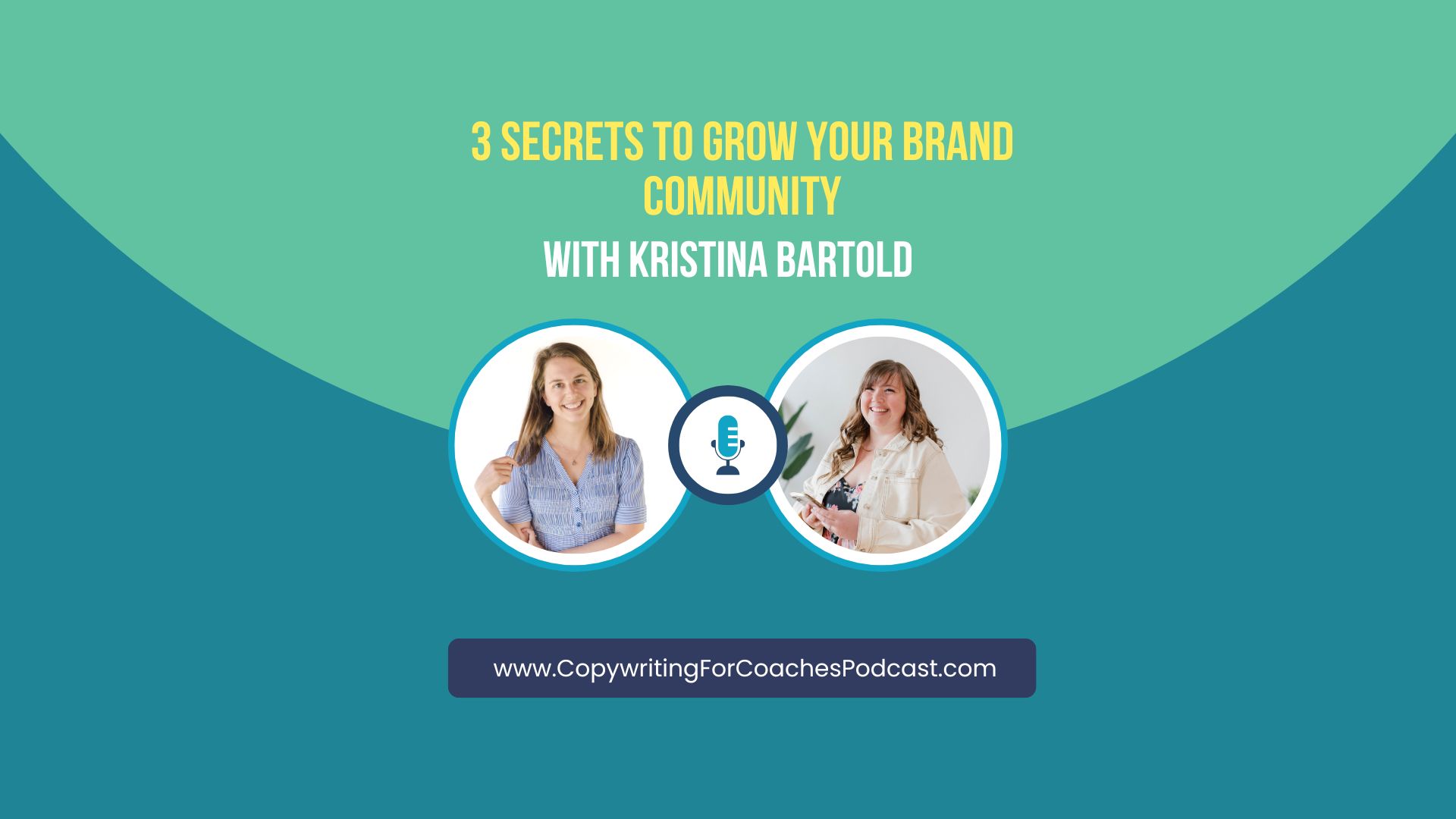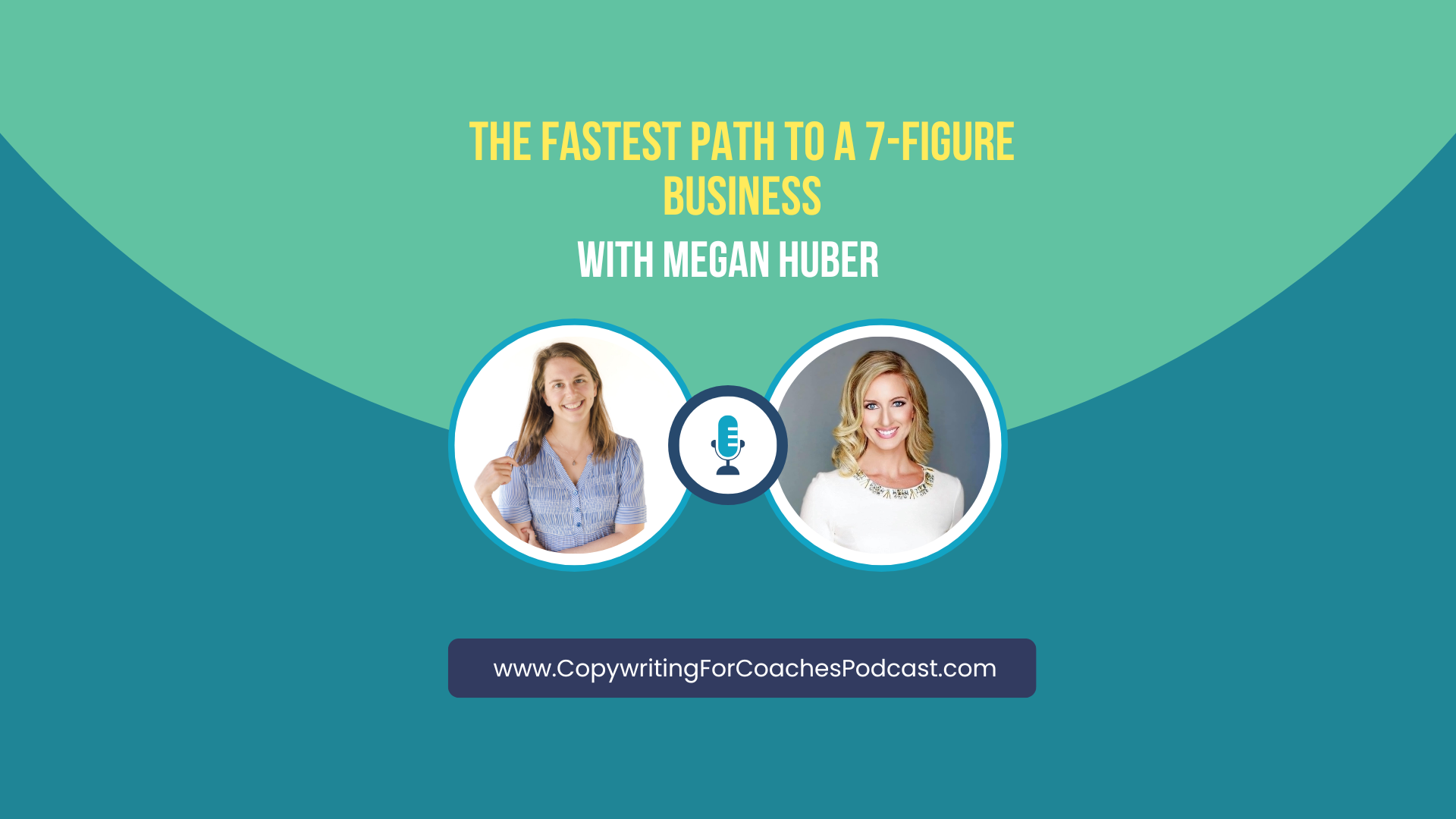How do top brands create copy that captures attention and drives success? Traditional copywriting strategies are failing—and I interviewed 11 brand strategists about what you should be doing to create effective brand copywriting instead.
Effective brand copywriting examples illustrate the power of words in not only engaging audiences but also in shifting perspectives and driving business growth. As the marketing world evolves, so does the approach to brand messaging. Gone are the days of static, cookie-cutter, one-size-fits-all strategies. Today, the key lies in constant experimentation and iteration. It’s okay to be in a state of flux, trying new things and discovering what works best. This journey of experimentation is essential to finding a voice that resonates deeply with your audience.
Consider this: you can’t attract $10,000 clients with $100 messaging.
Changing your messaging signifies a step into a higher level of engagement and effectiveness. It’s about more than just capturing attention; it’s about changing old beliefs and prompting those “aha” moments that stick with your audience. Authenticity plays a pivotal role here. Genuine content, where your true self shines through, creates a connection that keeps people coming back—even if you’re not the funniest or most entertaining.
Most people learn best through examples, so I’ve got 8 effective brand copywriting examples to share with you today. We’ll analyze what makes these examples work and how to apply these strategies to your own copy.
8 Effective Brand Copywriting Examples
Let’s look at some real-world examples of brands that use copywriting to effectively communicate their brand identity. I asked 11 brand strategists whose brand copywriting and messaging that they loved and we’ll analyze what makes it so great. These are in no particular order.
First, A Few Brand Voice Examples From Our Industry:
-
- Liz Hartke from a personal brand to “Luminary Leadership.” Without this, John Maxwell may not be grooming her to take over his leadership company. Her voice is a blend of empowerment, authenticity, expertise, and support, aimed at guiding and inspiring leaders to achieve their fullest potential.
-
- Kirsten Roldan’s brand is potent. She has a lot of really great one liners. Her personality has always been more spicy. It is clear this is who she is the minute you find her. You read her copy and you know she is not there to waste anyone’s time. Before she rebranded, she knew it was always there…now the difference is that she is taking ownership that this is really who she wants people to see her as and how she wants to present herself publicly.
-
- Dama Jue’s line “Go from idea to stripe notifications in 4 steps.” This isn’t even a headline, I found it in her copy on a sales page. But one of the brand strategists I interviewed was literally able to recite it without looking because it was so resonant and clearly solved her pain point.
-
- Parmees Yaz is transparent and real. She tells stories that really connect. “She writes long posts and I always read the whole thing!”
Four More Brand Voice Examples From Bigger Brands:
- Who Gives A Crap Toilet Paper. They are punny and different. Their blog is great example because they understand their audience. They explain their products (bamboo and recycled toilet paper) and mission (sustainability) in a clear and approachable way, making you feel like you’re hearing it from a friend who genuinely cares about the environment, loves a good pun, and isn’t afraid to talk frankly about going to the bathroom.
They use toilet humor and dad jokes to make talking about bathroom essentials fun and funny. They weave their dedication to sustainability and sanitation efforts seamlessly into their messaging, making it a feel-good aspect of their brand. This approach makes them relatable and memorable, particularly for a younger, environmentally-conscious audience.
By dissecting these successful examples, you can glean valuable insights into how to craft brand copywriting that resonates with your target audience.
Top 8 Branding Tools For Your Business
When it comes to building a standout brand, the right tools can make all the difference. Here are the top branding tools to elevate your brand strategy and connect with their audience effectively.
-
- Install HotJar to see how people are interacting with your website. It is a heat map so that you can see where they click, ask what they think, and learn why they drop off. It is one of the most accurate ways to know which messaging is connecting. (I especially love to have Hot Jar on sales pages!)
-
- Use Answer The Public to see what your ideal audience is asking about. It will tell you what people are Google searching for. That gives endless content ideas that you can be confident in talking about and share your own unique perspective on them.
-
- AI for research, brainstorming, and analyzing. It’s great to define brand style and create a mood board. It can pull together color ideas that resonate with this messaging. You can upload photos and make a mood board based on those photos. Or analyze a collection of photos and ask what story they are telling and see what colors are common. Kate Hejde is a master at this!
-
- Look into color psychology with Fiona Humberstone, The Brand Stylist and Marty Newmeier’s resources.
-
- Brand archetypes – both for your own brand AND for your target market personas (Thank you to Mallory Musante for that tip!)
-
- Pinterest for mood boards and inspiration.
Non-Tech Tools
There is so much you can do without getting a huge tech stack. Getting away from the tools is actually more helpful than overwhelming yourself with information. Sometimes turning the noise off can be more helpful.
Tiffany Neuman of Your Legacy Brand recommends journaling and meditation to give yourself space. Start with your vision in mind, then journal.
Emily Hunt from Hunt Media Group recommends a sketchbook and pencil. Let it come through you, then allow the designer to make it come to life digitally.
What Does the Future Hold for Effective Brand Copywriting in a Digital World?
Unlike the past, where maintaining separate personal and professional identities was the norm, today’s approach emphasizes showcasing oneself as a thought leader. This doesn’t mean bearing every detail of your life, but it is becoming more important to have a personal brand (especially among service providers!).
Transparency is another key trend. Consumers are increasingly drawn to brands that reveal what they care about and offer a behind-the-scenes look. The days of highly polished, perfect images everywhere are done. While professional photos are still important for your website, the focus is shifting towards authenticity and UGC-style content. Minor imperfections, like spelling errors on social media, are less of a concern because they humanize the brand. Embracing raw, unedited content, such as unedited podcast episodes, resonates more with audiences who crave genuine interactions.
Customization in branding is also on the rise. People now have various ways to approach branding, seeking deeper understandings of what it means to have a personal brand. They are buying from brands that demonstrate intentionality and consistency. Visuals that stand out from typical Canva templates are more refreshing and engaging, reflecting creativity and the uniqueness of your personality and approach.
The key takeaway here is to be yourself.
Remove the metaphorical mask and stay true to your strengths and who you are. There are countless ways to convey your message without feeling like you have to dance on reels or conform to standards that are made up anyway. Authenticity is crucial in an era where bro marketing tactics, pain point marketing, and clickbait are losing their effectiveness. Today’s consumers are savvy and can see through these strategies.
The brands that thrive are those that can adapt to these new realities. They emphasize personal connections, transparency, and authenticity. They understand that a brand is not just about looking good but about building a strong, relatable, and trustworthy identity. As our digital world continues to evolve, these principles will become even more critical in defining successful branding strategies.
The Impact of AI on Branding
The impact of AI on branding is profound, yet it underscores an essential truth: authenticity remains irreplaceable. While AI can generate vast amounts of content, there is an increasing saturation of AI-produced material. People can discern the difference between genuine, heartfelt stories and those generated by algorithms. Authentic narratives, woven from real-life experiences and crafted with thoughtful copywriting, stand out in this crowded space and resonate more deeply with audiences. It is worth the investment.
Art and creativity are invaluable in branding. It’s essential to lean into our unique qualities, our “big why,” and vision. With the ease of starting a business today, the market is becoming increasingly saturated. Differentiating yourself through authentic, well-crafted brand stories is more important than ever. Building a strong foundation with a clear, impactful brand story is crucial for long-term success and relevance.
The Best Way To Use AI For Branding
However, it’s not about shunning AI entirely. AI is a powerful tool that, when used correctly, can enhance our capabilities. It needs to be guided by human oversight to ensure it aligns with the brand’s voice and audience.
The advancements in tools and technology offer significant opportunities. We can move faster, reach a global market, and access a wealth of ideas and insights. AI and other tools can help us analyze data and think more broadly. These tools give us back time to focus on higher-order, creative, and emotional aspects of branding. Creativity in how we use these tools can open new avenues and stretch our thinking in innovative ways.
As AI continues to commoditize content, the essence of your brand—your authenticity, energy, and identity—must shine through. Authenticity will always be the cornerstone of effective branding. The human connection, creativity, and unique storytelling are elements that AI cannot duplicate and will continue to be the defining factors that set successful brands apart in the digital age.
Effective Brand Copywriting For Impact-Driven Businesses
These insights from brand strategists underscore the transformative power of storytelling and genuine connection in driving business growth. By dissecting real-world examples and applying these principles, businesses can not only capture attention but also foster lasting relationships with their audience. As we navigate the future of effective brand copywriting, the ability to adapt, innovate, and stay true to your brand’s voice will undoubtedly pave the way for sustained impact and relevance.
Curious what it looks like to work with a copywriter? Join my Inbox Insiders for free by clicking here.
Thank you to the brand strategists who contributed to this series:
Areanna Arclese
Fabi Paolini
Ashlee Sang
Mallory Musante
Emily Hunt
Kate Hejde
Terrica Strozier
Mallika Malhotra
Alexis Underwood
Jasmine Haitalani
Tiffany Neuman
This is part 3 of my brand strategist interview series. You can find part 1 on mastering authentic brand messaging by clicking here and part 2 on your authentic brand voice.
- Liquid Death – “It’s a can of water. But it feels like the coolest thing ever.” Liquid Death’s brand voice uses edgy jokes and even some gore imagery to play against the typical, healthy image of water brands. They challenge traditional marketing conventions and poke fun at the seriousness of some health and wellness trends. They don’t take themselves too seriously. They acknowledge the absurdity of their marketing and embrace it.
It’s like a heavy metal band promoting healthy living through witty slogans like “Murder your thirst” and “Stay hydrated or die.” It’s a clear departure from the calmness and serenity often associated with water brands. This voice resonates with a younger audience.
-
- Brands that have been personified or anthropomorphized on Twitter or X or Threads. Wendy’s and REI are some examples here. The brand is given a personality, feels like a person you want to hang out with.
-
- AirBnB. Their tagline “belong anywhere” is an identity statement that shares simply and succinctly shares their values. It’s not even about the product (look at this house!); it’s about the feeling and the experience you get from it.
- Who Gives A Crap Toilet Paper. They are punny and different. Their blog is great example because they understand their audience. They explain their products (bamboo and recycled toilet paper) and mission (sustainability) in a clear and approachable way, making you feel like you’re hearing it from a friend who genuinely cares about the environment, loves a good pun, and isn’t afraid to talk frankly about going to the bathroom.
They use toilet humor and dad jokes to make talking about bathroom essentials fun and funny. They weave their dedication to sustainability and sanitation efforts seamlessly into their messaging, making it a feel-good aspect of their brand. This approach makes them relatable and memorable, particularly for a younger, environmentally-conscious audience.
By dissecting these successful examples, you can glean valuable insights into how to craft brand copywriting that resonates with your target audience.
Top 8 Branding Tools For Your Business
When it comes to building a standout brand, the right tools can make all the difference. Here are the top branding tools to elevate your brand strategy and connect with their audience effectively.
-
- Install HotJar to see how people are interacting with your website. It is a heat map so that you can see where they click, ask what they think, and learn why they drop off. It is one of the most accurate ways to know which messaging is connecting. (I especially love to have Hot Jar on sales pages!)
-
- Use Answer The Public to see what your ideal audience is asking about. It will tell you what people are Google searching for. That gives endless content ideas that you can be confident in talking about and share your own unique perspective on them.
-
- AI for research, brainstorming, and analyzing. It’s great to define brand style and create a mood board. It can pull together color ideas that resonate with this messaging. You can upload photos and make a mood board based on those photos. Or analyze a collection of photos and ask what story they are telling and see what colors are common. Kate Hejde is a master at this!
-
- Look into color psychology with Fiona Humberstone, The Brand Stylist and Marty Newmeier’s resources.
-
- Brand archetypes – both for your own brand AND for your target market personas (Thank you to Mallory Musante for that tip!)
-
- Pinterest for mood boards and inspiration.
Non-Tech Tools
There is so much you can do without getting a huge tech stack. Getting away from the tools is actually more helpful than overwhelming yourself with information. Sometimes turning the noise off can be more helpful.
Tiffany Neuman of Your Legacy Brand recommends journaling and meditation to give yourself space. Start with your vision in mind, then journal.
Emily Hunt from Hunt Media Group recommends a sketchbook and pencil. Let it come through you, then allow the designer to make it come to life digitally.
What Does the Future Hold for Effective Brand Copywriting in a Digital World?
Unlike the past, where maintaining separate personal and professional identities was the norm, today’s approach emphasizes showcasing oneself as a thought leader. This doesn’t mean bearing every detail of your life, but it is becoming more important to have a personal brand (especially among service providers!).
Transparency is another key trend. Consumers are increasingly drawn to brands that reveal what they care about and offer a behind-the-scenes look. The days of highly polished, perfect images everywhere are done. While professional photos are still important for your website, the focus is shifting towards authenticity and UGC-style content. Minor imperfections, like spelling errors on social media, are less of a concern because they humanize the brand. Embracing raw, unedited content, such as unedited podcast episodes, resonates more with audiences who crave genuine interactions.
Customization in branding is also on the rise. People now have various ways to approach branding, seeking deeper understandings of what it means to have a personal brand. They are buying from brands that demonstrate intentionality and consistency. Visuals that stand out from typical Canva templates are more refreshing and engaging, reflecting creativity and the uniqueness of your personality and approach.
The key takeaway here is to be yourself.
Remove the metaphorical mask and stay true to your strengths and who you are. There are countless ways to convey your message without feeling like you have to dance on reels or conform to standards that are made up anyway. Authenticity is crucial in an era where bro marketing tactics, pain point marketing, and clickbait are losing their effectiveness. Today’s consumers are savvy and can see through these strategies.
The brands that thrive are those that can adapt to these new realities. They emphasize personal connections, transparency, and authenticity. They understand that a brand is not just about looking good but about building a strong, relatable, and trustworthy identity. As our digital world continues to evolve, these principles will become even more critical in defining successful branding strategies.
The Impact of AI on Branding
The impact of AI on branding is profound, yet it underscores an essential truth: authenticity remains irreplaceable. While AI can generate vast amounts of content, there is an increasing saturation of AI-produced material. People can discern the difference between genuine, heartfelt stories and those generated by algorithms. Authentic narratives, woven from real-life experiences and crafted with thoughtful copywriting, stand out in this crowded space and resonate more deeply with audiences. It is worth the investment.
Art and creativity are invaluable in branding. It’s essential to lean into our unique qualities, our “big why,” and vision. With the ease of starting a business today, the market is becoming increasingly saturated. Differentiating yourself through authentic, well-crafted brand stories is more important than ever. Building a strong foundation with a clear, impactful brand story is crucial for long-term success and relevance.
The Best Way To Use AI For Branding
However, it’s not about shunning AI entirely. AI is a powerful tool that, when used correctly, can enhance our capabilities. It needs to be guided by human oversight to ensure it aligns with the brand’s voice and audience.
The advancements in tools and technology offer significant opportunities. We can move faster, reach a global market, and access a wealth of ideas and insights. AI and other tools can help us analyze data and think more broadly. These tools give us back time to focus on higher-order, creative, and emotional aspects of branding. Creativity in how we use these tools can open new avenues and stretch our thinking in innovative ways.
As AI continues to commoditize content, the essence of your brand—your authenticity, energy, and identity—must shine through. Authenticity will always be the cornerstone of effective branding. The human connection, creativity, and unique storytelling are elements that AI cannot duplicate and will continue to be the defining factors that set successful brands apart in the digital age.
Effective Brand Copywriting For Impact-Driven Businesses
These insights from brand strategists underscore the transformative power of storytelling and genuine connection in driving business growth. By dissecting real-world examples and applying these principles, businesses can not only capture attention but also foster lasting relationships with their audience. As we navigate the future of effective brand copywriting, the ability to adapt, innovate, and stay true to your brand’s voice will undoubtedly pave the way for sustained impact and relevance.
Curious what it looks like to work with a copywriter? Join my Inbox Insiders for free by clicking here.
Thank you to the brand strategists who contributed to this series:
Areanna Arclese
Fabi Paolini
Ashlee Sang
Mallory Musante
Emily Hunt
Kate Hejde
Terrica Strozier
Mallika Malhotra
Alexis Underwood
Jasmine Haitalani
Tiffany Neuman
This is part 3 of my brand strategist interview series. You can find part 1 on mastering authentic brand messaging by clicking here and part 2 on your authentic brand voice.




